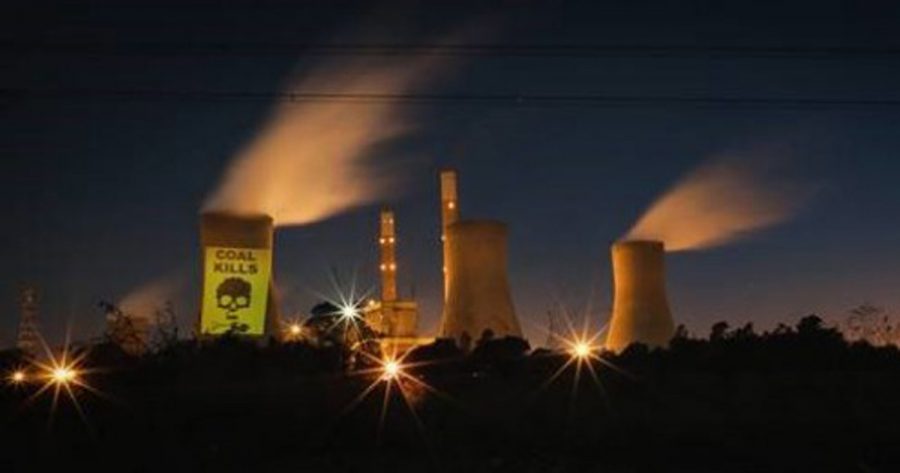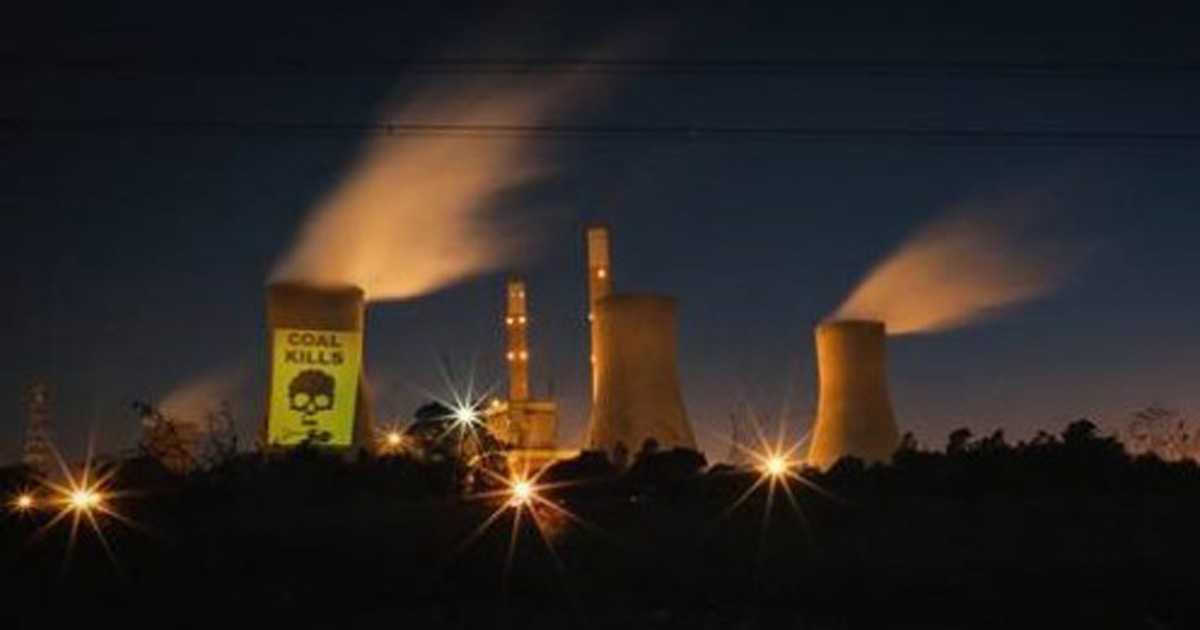
World’s Largest Air Pollution Hotspot Revealed as Mpumalanga, South Africa
New satellite data reveals the world’s largest air pollution hotspot is in South Africa – in Mpumalanga… which is home to a cluster of 12 coal-fired power plants, with a total capacity of 32 gigawatts owned and operated by Eskom. The data also revealed that millions of people in Johannesburg and Pretoria are also being […]

New satellite data reveals the world’s largest air pollution hotspot is in South Africa – in Mpumalanga… which is home to a cluster of 12 coal-fired power plants, with a total capacity of 32 gigawatts owned and operated by Eskom. The data also revealed that millions of people in Johannesburg and Pretoria are also being exposed to this dangerous pollution.

In response to the news, Greenpeace Africa has projected a ‘COAL KILLS’ message on the province’s Duvha coal-fired power station, and issued a call for the South African government to ensure Eskom complies with air quality legislation and that a coal-free IRP is finalised this year to provide clean and healthy air for all.
According to Greenpeace, a groundbreaking analysis of satellite data from 1 June to 31 August this year reveals the world’s largest NO2 air pollution hotspots across six continents in the most detail to date – Mpumalanga tops the chart as the world’s largest NO2 hotspot across six continents.
Nitrogen Dioxide (NO2) is a dangerous pollutant in and of itself and also contributes to the formation of PM2.5 and ozone, two of the most dangerous forms of air pollution, says Greenpeace.
“It has been reported before that the Witbank area has the world’s dirtiest air, and now this analysis of high tech satellite data has revealed that the Mpumalanga province is the global number one hotspot for NO2 emissions.
“This confirms that South Africa has the most polluting cluster of coal-fired power stations in the world which is both disturbing and very scary,” said Melita Steele, Senior Climate and Energy Campaign Manager for Greenpeace Africa.
The satellite data further reveals that the cities of Johannesburg and Pretoria are also highly affected by extreme NO2 pollution levels which blow across from Mpumalanga and into both cities due to close proximity and regular eastwinds.
The average wind directions over Johannesburg and Pretoria in the last 30 years on Meteoblue show that for about 28% of the year, the wind is blowing over Johannesburg… which means plumes of dangerous NO2 pollution regularly cover these cities and their 8 million people, claims Greenpeace.
“Because South Africa’s coal-belts are hidden from view for the majority of South Africans, it can be easy to pretend that they don’t actually exist. The reality is that coal extraction and burning has devastating impacts on the people living in the area. This satellite data now confirms that there is nowhere to hide: Eskom’s coal addiction in Mpumalanga means that millions of people living in Johannesburg and Pretoria are also impacted by the pollution from coal,” continued Steele.
NO2 Hotspots around the world…
The list of the largest NO2 hotspots in the world includes well known coal-fired power plants in South Africa, Germany and India, and a total of nine coal power and industrial clusters in China. Cities such as Santiago de Chile, London, Paris, Dubai and Tehran also feature high in the ranking due to transport-related emissions.
“Air pollution is a global health crisis, with up to 95% of the world’s population breathing unsafe air. South Africa is a significant global hotspot with its high concentration of coal power stations and its weak air pollution standards. Our Government urgently needs to come up with an action plan that protects millions of people, instead of dirty coal power stations,” continued Steele.
“The Government should also set up an action plan with concrete steps, measures and deadlines to make sure that air pollution levels in high priority areas comply with existing regulations,” said Steele.
To check the air quality in your country, visit:
www.stateofglobalair.org
